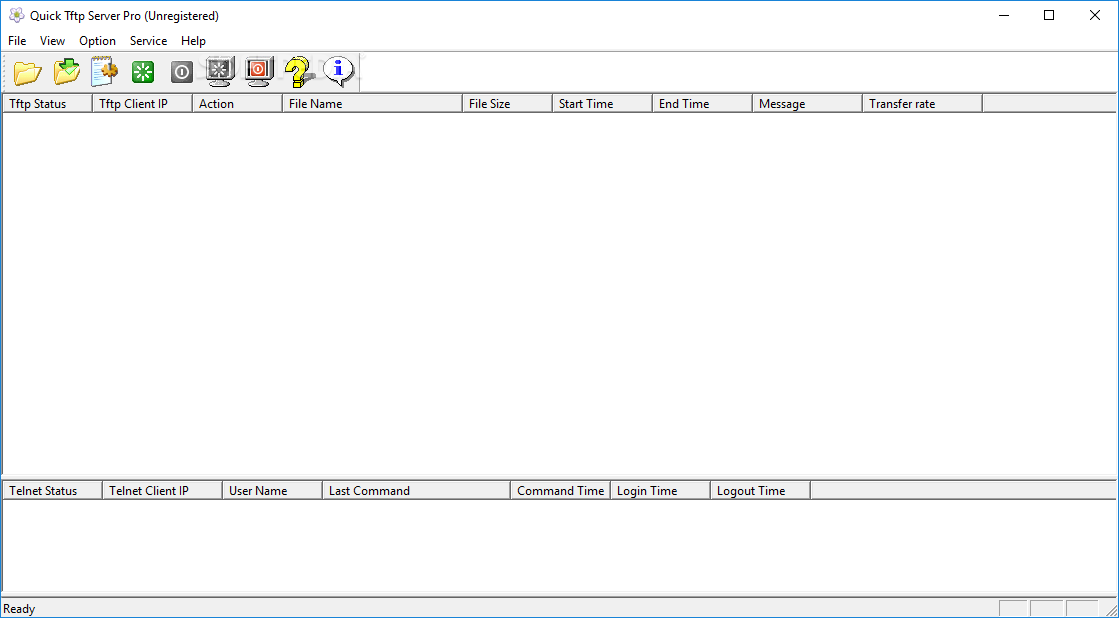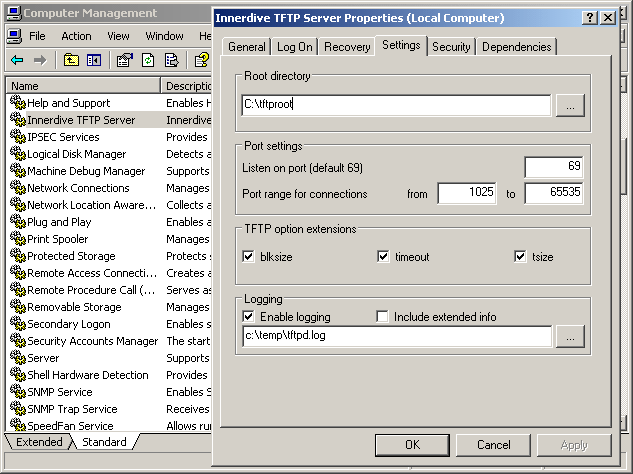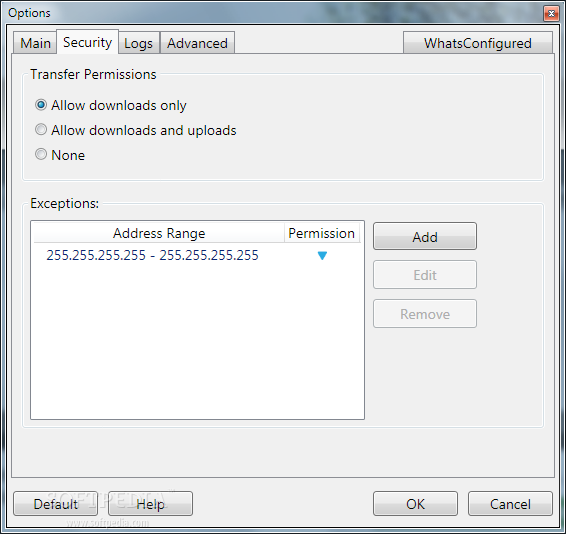
- #LOAD TFTPSERVER ... HOW TO#
- #LOAD TFTPSERVER ... INSTALL#
- #LOAD TFTPSERVER ... PC#
- #LOAD TFTPSERVER ... FREE#
If you create an empty file with the same name and edit its access rights, the above upload process will be successful. In other words, it is not possible to upload a file that does not exist on the TFTP server via TFTP clients. TFTP requires that a file with the same name should be in the directory where the file will be written as a prerequisite for a file upload and that the write access for this file should be available to everyone. The problem here is because of some security procedures on the TFTP server. Since the error message returned is not self-explanatory, it is difficult to understand what the real problem is. 100Īlthough the above command is correct, you will get an error while transferring the file to your TFTP server.

The utility also includes a TFTP client, a DNS server, a DHCP server, and a Syslog server. As defined in RFC 1350, Trivial File Transfer Protocol (TFTP) can only read and write files from or to a remote server.
#LOAD TFTPSERVER ... FREE#
To send a sample file to the TFTP server, you need to use a command like this: busybox tftp -l example. Tftpd64 is a free TFTP server for Windows. Attempts to access upper directories are blocked, and. All files in this directory (and subdirectories) are available to be downloaded, if their permissions allow so. To use the TFTP client application, issue the busybox tftp command: busybox tftp /tftpserv base directory port The base directory argument specify the directory containing the files you want to distribute with the server. In this instance, I had setup the server IP address to an incorrect one 192.168.1.177, it should be 192.168.1.117 instead.In such cases, since the TFTP client will probably be compiled in busybox, you can send a file saved in the system to a TFTP server on a network. To create firmware file(s) via a specific TFTP server, use the tftp-server flash:firmware-filename(s) query on the Cisco page Unified Communications Manager express router.The load phone-type firmware-file command in the phone service is also usually required to load the IP phone processor with the most suitable firmware files.
#LOAD TFTPSERVER ... HOW TO#
You could have entered an incorrect server IP or Error filename address if the print-out looks like: kvim3#tftp 1080000 u-boot.bin How to load or save data over TFTP Enter the IP address of the TFTP server in the TFTP Server IP Address text box. You might need to check the connection of your LAN cable if the terminal print-out looks like: kvim3# tftp 1080000 u-boot.binĭwmac.ff3f0000 Waiting for PHY auto negotiation to complete. If everything goes well, the terminal print-out will look similar to what is shown above. Load a file into the 0x1080000 address: kvim3# tftp 1080000 u-boot.bin Make sure you have copied the testing file to the TFTF root path: $ ls /srv/tftp/u-boot.bin NOTE:How to confirm that your configuration is correct. You can run defenv to restore the env to the default values. Running saveenv will save the env values to the env partition on the eMMC. Setup the ip address of the target client and TFTP host server: kvim3# setenv ipaddr 192.168.1.249 Hit Enter or space or Ctrl+C key to stop autoboot - : 0 Stop U-Boot autoboot by hitting Enter or Space key at the moment you power on your target device: U-Boot 2015.01 (19:31:53)
#LOAD TFTPSERVER ... PC#


Restart the TFTP Service: $ sudo /etc/init.d/xinetd restart Uncomment this line, and add the option and value -s /srv/tftp to the end of this line: tftp dgram udp wait root /usr/sbin/tcpd /usr/sbin/in.tftpd -s /srv/tftpĬreate and modify permissions on the TFTP root directory: $ sudo mkdir /srv/tftp To enable the TFTP server, edit the file /etc/nf as the root user, and locate the line that looks like the following: #tftp dgram udp wait root /usr/sbin/tcpd /usr/sbin/in.tftpd
#LOAD TFTPSERVER ... INSTALL#
Install TFTP packages: $ sudo apt-get install openbsd-inetd tftpd tftp TFTP server will respond directly to client 192.168.1.1 bypassing the NetScaler but while replying it will use source IP as 192.168.1.2 because of the loopback adapter we created. NetScaler will send the packet to TFTP server 192.168.1.3. Here we provide some instructions for reference: Setup TFTP Client 192.168.1.1 will send packet to NetScaler load balancing VIP 192.168.1.2. Our approach to setup a TFTP server is quite similar to other guides that you can find via Google.


 0 kommentar(er)
0 kommentar(er)
